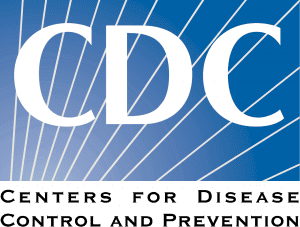- Real-world Effectiveness of Nirmatrelvir-Ritonavir and Molnupiravir in Non-hospitalised Adults with Covid-19: A Population-based, Retrospective Cohort Study (sic) Cohort Study
A retrospective cohort study used data from the Municipal Department for Public Health Services of Vienna, Austria, to identify non-hospitalized adults with confirmed SARS-CoV-2 infection between Jan-2022–May-2023. Nirmatrelvir-ritonavir users were compared with untreated controls and molnupiravir users with untreated controls. Outcomes were hospitalization and all-cause death within 28 days. They identified 113,399 eligible cases (90,481 untreated controls, 12,166 nirmatrelvir-ritonavir users, and 10,752 molnupiravir users). Over 96% of the patients were immunized by previous infection or vaccination. In the nirmatrelvir-ritonavir analysis, the estimated risk of hospitalization was 0.57% (95%CI, 0.35–0.78) in nirmatrelvir-ritonavir users and 1.09% (95%CI, 0.86–1.32) in untreated controls (aRD -0.53%; 95%CI, -0.77–-0.28). The estimated risk of death was 0.0% (95%CI, 0.0–0.0) in nirmatrelvir-ritonavir users and 0.13% (95%CI, 0.08–0.18) in untreated controls (aRD -0.13%, 95%CI, -0.18–-0.08). These statistically significant aRDs were restricted to the subgroup of patients ≥60 years. In the molnupiravir analysis no significant benefit was observed. Among outpatients aged ≥60 years with Covid-19 in an Omicron-dominated era, treatment with nirmatrelvir-ritonavir was associated with a lower risk of hospitalization and all-cause death within 28 days, albeit with wide confidence intervals and high numbers needed to treat. This finding was not observed in molnupiravir users and younger nirmatrelvir-ritonavir users. - Alleviation of COVID-19 Symptoms and Reduction in Healthcare Utilization Among High-Risk Patients Treated with Nirmatrelvir/Ritonavir (NMV/R): A Phase 3 Randomized Trial
These results are from a phase 2/3, double-blind, randomized (1:1) study that assessed oral NMV/r 300 mg/100 mg (Paxlovid) versus placebo given for five days in high-risk, unvaccinated, nonhospitalized, symptomatic adults with COVID-19 from 343 sites across 21 countries. In testing the primary endpoint of COVID-19‒related hospitalization and all-cause deaths and key secondary endpoints including symptom duration and COVID-19‒related medical visits. Randomized patients enrolled from July 2021 through December 2021, 1966 (NMV/r, n=977; placebo, n=989) were included in the prespecified analysis population (symptom onset ≤5 days, did not receive monoclonal antibodies). NMV/r significantly reduced times to sustained alleviation (median, 13 vs 15 days; hazard ratio [HR]=1.27, p<0.0001) and resolution (16 vs 19 days; HR=1.20, p=0.0022) through Day 28 and significantly reduced the number of COVID-19‒related medical visits and the proportion of patients with such visits. Hospitalized patients treated with NMV/r had shorter stays, none required ICU admission or mechanical ventilation, and all were discharged to home/self-care. Fewer NMV/r-treated patients required additional treatment for COVID-19. No NMV/r-treated patients died through Week 24 compared with 15 placebo-treated patients.
- Post-acute Sequelae of SARS-CoV-2 Cardiovascular Symptoms are Associated with Trace-level Cytokines that Affect Cardiomyocyte Function
Investigators took blood samples from three groups: Recovered individuals, those with prolonged PASC-CVS, and SARS-CoV-2-negative individuals. They found that those with PASC-CVS had a blood signature linked to inflammation. Trace-level pro-inflammatory cytokines were detected in the plasma from donors with PASC-CVS 18 months post infection using nanotechnology. These trace-level cytokines affected the function of primary human cardiomyocytes. Plasma proteomics also demonstrated higher levels of complement and coagulation proteins in the plasma from patients with PASC-CVS (PASC with cardiovascular symptoms).
Situation Dashboards

World Health Organization (WHO)
Novel Coronavirus (COVID-19) Situation from World Health Organization (WHO)

Johns Hopkins University (JHU)
Coronavirus COVID-19 Global Cases by the Center for Systems Science and Engineering (CSSE) at JHU

COVID-19 in US and Canada
1Point3Acres Real-Time Coronavirus (COVID-19) Updates in US and Canada with Credible Sources

Genomic Epidemiology COVID-19
Genomic Epidemiology of (COVID-19) Maintained by the Nextstrain team, enabled by data from GISAID.






